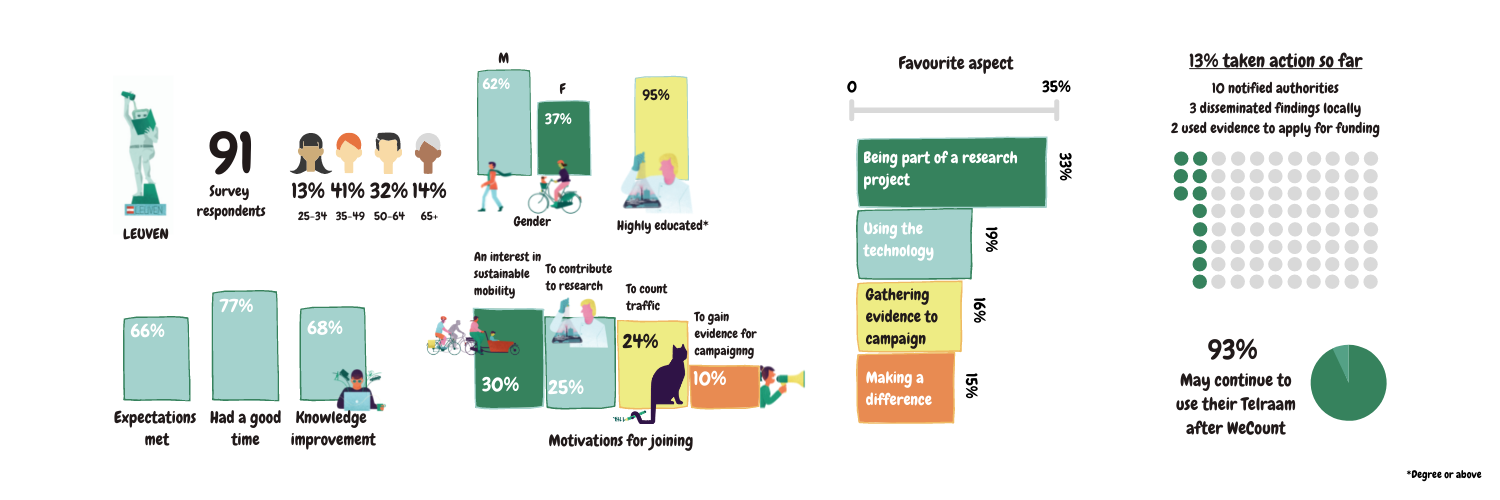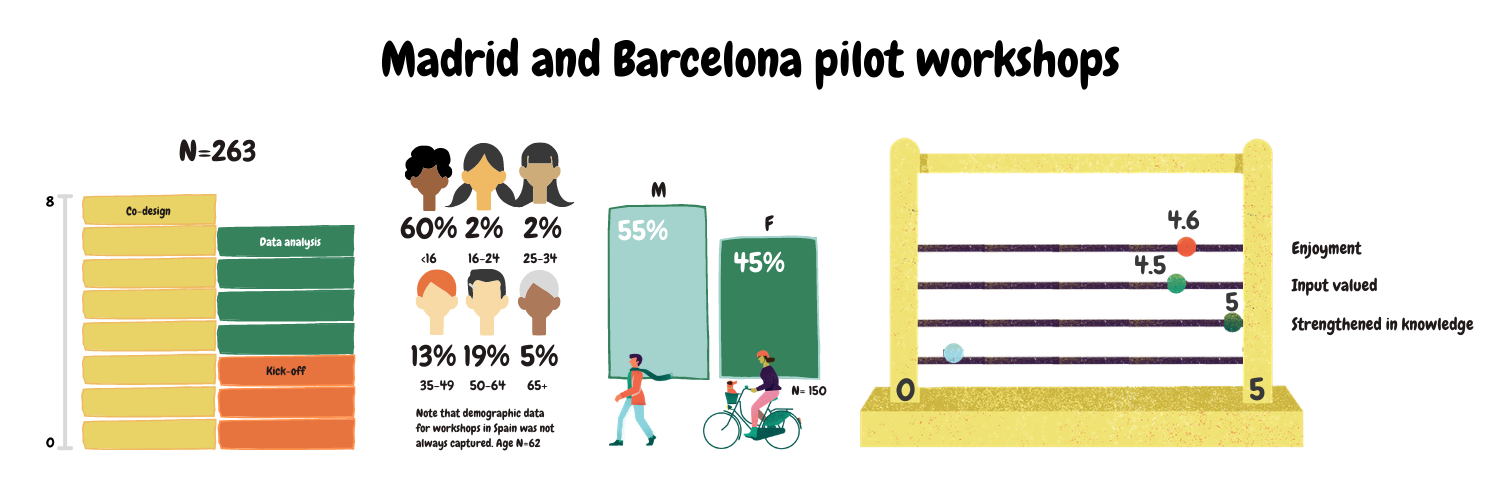
Let's talk numbers! - a closer look at the WeCount experience

WeCount works across Europe to help citizens play a leading role in the generation of data and knowledge, engaging with mobility challenges within their neighbourhoods. Thanks to the innovative, low-cost and automated Telraam sensors, citizens have the opportunity to participate in the co-creation of local initiatives and take concrete steps towards safer and sustainable urban mobility.
To better understand citizens' involvement, the University of West England Bristol led a survey that helps us monitor and evaluate the engagement and demographics across WeCount’s pilot sites, focusing on the Belgian city of Leuven and the Spanish cities of Barcelona and Madrid.
Short online surveys were created to gather participants' feedback on WeCount’s activities and events. This method helped not to take away participant’s attention during WeCount’s events and workshops, but also to provide a safe environment where respondents did not feel pressured to give certain answers, allowing for unbiased answers.
The final online survey was designed as a quick and easy questionnaire with both open and closed questions, to ensure the collection of a variety of data. In addition to online surveys, the Telraam registration process included some demographic and motivation questions that citizens were free to answer when they registered their interest in having a Telraam.
A look at Leuven’s demographics

In the city of Leuven, 264 people completed the registration on the Telraam website, of which 105 qualified for a Telraam sensor and became involved in the WeCount Leuven network.
WeCount has shown to attract mainly residents from generation X (age 41-56). Almost half of the candidates (48%; N=72) indicated their age to be between 35 and 49 years old. This is a remarkably high percentage, considering that only 16% (N=24) are younger than 35 and as many as 36% (N=53) are over 50.
A look at Madrid’s and Barcelona’s demographics

In Madrid and Barcelona, the network started with its first Telraam in March 2020, in which 102 citizens were qualified to receive and install a Telraam sensor.
Unlike in Leuven, the interest in participating in the WeCount project in Spain came mainly from female citizens. Of the participants that indicated their gender, 58% are female and 42% are male. This distribution is similar in both Barcelona and Madrid, with only minor differences.
In terms of age, 40% of the interested applicants across Madrid and Barcelona are aged between 35 and 49, while 37% are )younger than 35. The cohort is thus largely biased towards generation Y (25-40), with over 87% of participants belonging to this age range. We can see the difference in demographics between Belgium and Spain as only 20% (N=55) of citizens in WeCount Spain are aged 50 years or older and 4% (N=10) of the applicants are 65 years or older.
While in Barcelona only 4% of young people (between 16 and 24 years old) were reached, in Madrid this number rises to 19%. Conversely, Barcelona has remarkably more candidates (19%; N=26) aged between 50 and 64 years than Madrid (14%; N=19).
With 89% of participants feeling like their knowledge of their city’s mobility has improved and 89% letting us know they intend to continue using the Telraam sensor after WeCount, participants were supported in the co-creation of three proposals.
Overall remarks on WeCount experience from participants
Across WeCount’s sites in Belgium and Spain, participants largely enjoyed their time (over 75%) and their expectations were on the whole satisfied. Participants mostly joined due to their interest in sustainable mobility and their demographic profile largely corresponds to citizen science projects, with Spain’s cohort slightly more skewed towards younger citizens.
The majority of citizen’s perceived some degree of change to their knowledge on traffic-related issues (over 68%), with more than 25% and 35%, respectively, believing their feelings about where they live and opinions on traffic-related issues had changed. When it comes to the technology itself, more neutral or negative experiences were highlighted. Only about half of respondents across both cities rated the Telraam data as good or very good. From the survey's responses, we notice a willingness by some citizens across both countries to continue working with the data and act to change the liveability of their streets.